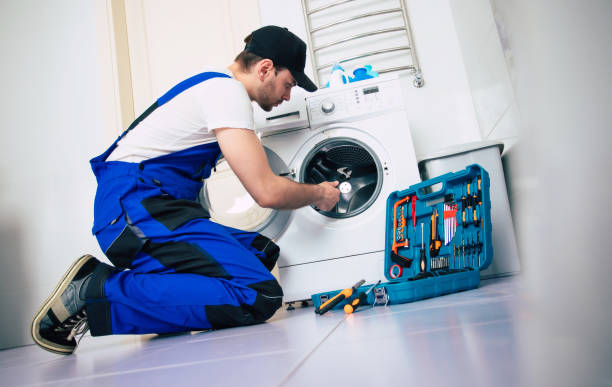Samsung washing machines are known for their reliability and efficiency. However, like any appliance, they may encounter issues over time. In this article, we will guide you through common problems that may arise with your Samsung washing machine repair and provide step-by-step solutions for DIY repair. We’ll also discuss when it’s best to seek professional assistance.
Common Washing Machine Issues
- Washer Not Turning On
If your Samsung washing machine is not powering up, it can be frustrating. Start by checking the power source, the outlet, and the power cord. If these are in good condition and the machine still won’t turn on, you might have a faulty power switch or control board.
- Noisy Washing Machine
Unusual noises during the wash cycle can be disruptive. The problem could be a foreign object caught in the drum, a loose belt, or worn-out bearings.
- Leaking Washer
A leaking washer can cause water damage to your home. The issue might stem from a damaged door seal, loose hose connections, or an obstructed drain.
- Washer Not Draining Properly
If your washing machine isn’t draining correctly, it could result in wet clothes at the end of the cycle. The problem may be a clogged drain pump, a blocked hose, or an issue with the pump motor.
Tools Needed for Repair
Before attempting any DIY repairs, gather the necessary tools and equipment. You may need a multimeter, screwdrivers, pliers, a wrench, a flashlight, and replacement parts if necessary. Always work in a well-lit area with good ventilation.
Safety Precautions
Safety is paramount when working with electrical appliances. Ensure that the machine is unplugged, and if necessary, turn off the water supply. If you’re uncertain about your skills, it’s advisable to seek professional help.
Diagnosing the Problem
Start by identifying the issue with your washing machine. The symptoms mentioned earlier can help you pinpoint the problem. If in doubt, consult your machine’s manual for troubleshooting tips.
Washer Not Turning On
- Replacing the Power Cord
If the power cord is frayed or damaged, replace it with a new one following the manufacturer’s guidelines. Ensure that the machine is unplugged during this process.
- Fixing the Noisy Washer
To address the noise issue, inspect the drum for foreign objects and tighten any loose components. If the problem persists, you may need to replace worn-out bearings or a faulty belt.
- Sealing Leaks
Leaking issues can often be resolved by checking hose connections and the door seal. If they are damaged, replace them to prevent further leakage.
- Clearing Drainage Issues
For improper drainage, clear any clogs from the drain pump or hose. Make sure the pump motor is functioning correctly.
Maintenance Tips
Regular maintenance can extend the life of your Samsung washing machine. Clean the lint filter, door seal, and detergent dispenser regularly. Additionally, ensure that the machine is level and stable to prevent noise and vibration.
When to Call a Professional
While DIY repairs can save you money, there are instances where it’s best to consult a professional. If the issue is beyond your expertise or involves complex electrical components, don’t hesitate to seek expert assistance.
Conclusion
Repairing your Samsung washing machine is possible, even for those without extensive technical knowledge. By diagnosing the problem, taking safety precautions, and following our step-by-step DIY repair instructions, you can save time and money. However, always know when to call in a professional for more complicated issues.


